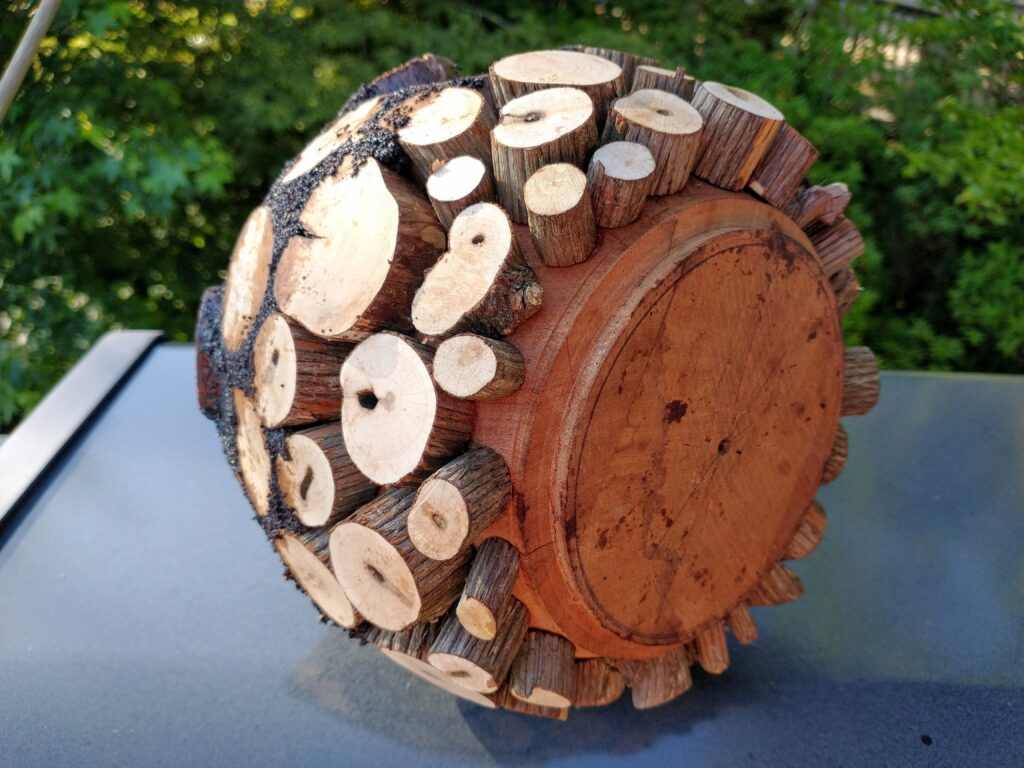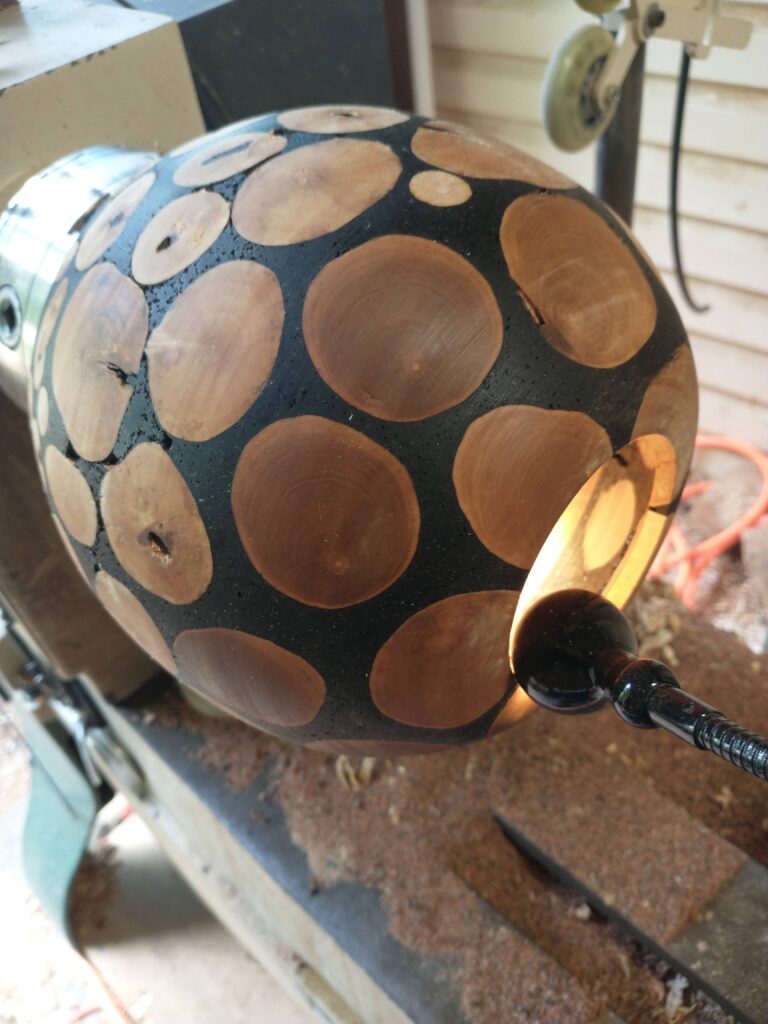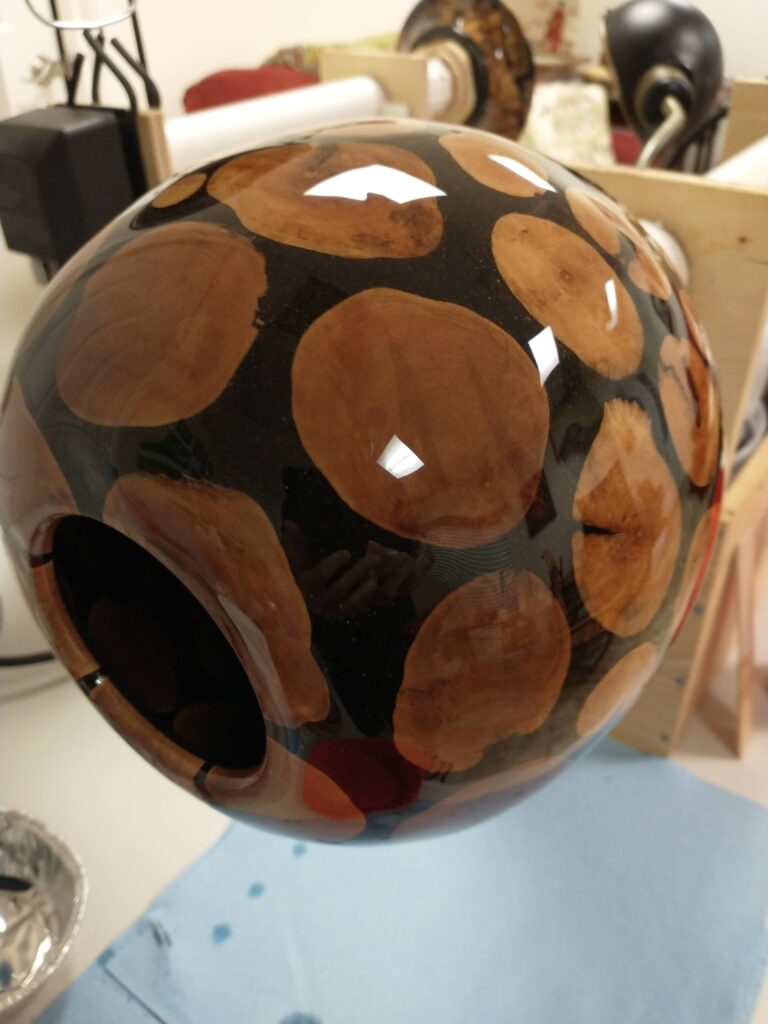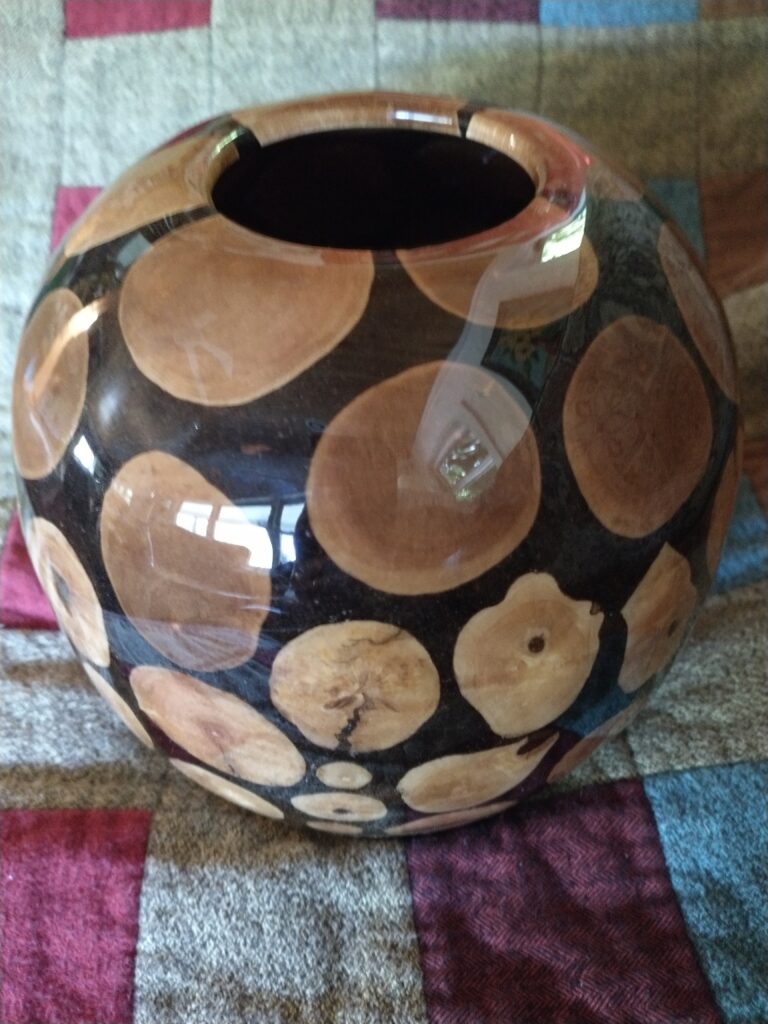This project was inspired by one of Philip Moulthrop’s hollow-forms, which I saw in an exhibition at the Atlanta Botanical Gardens.
The project begins with a simple hollow-form which will serve as the base for the mosaic work. This base can be any wood at all; it will be almost entirely carved away in the process. I made a base from a cut-off of a mahogany ballister, that was approximately 7″ diameter.

I then attached the mountain laurel pieces around the outside of the base. At first I used epoxy mixed with coffee, but that took too long, and I switched to CA glue.

Once all the mountain laurel pieces were in place around the outside of the base, I began to fill between the pieces, with a thick, coffee-epoxy mixture. The coffee served to make the epoxy black, and also to thicken it so it wouldn’t run after being applied with a putty knife. Then, after the epoxy cured, I put the hollow-form back on the lathe, and began to round the outside.

Once the mosaic-layer outside was turned round, I turned away the base on the inside, so that none of the base remained, except on the bottom. The wall of the hollow-form was now nothing but mountain laurel branch pieces, held together by coffee-epoxy.

Once the outside was completed, including filling gaps, I put the hollow-form on my ‘Epoxinator’ (slow-rotator) for the application and curing of several coats of clear epoxy as a surface finish on the outside, and also on the inside.

The hollow-form then had to go back on the lathe, using a vacuum chuck, to remove the tenon and clean up the bottom. Then, more epoxy to finish the bottom, and we’re done:

Robert started woodturning in 2015, after retiring from law practice and software development work. His woodworking shop, Black Rock Woodworks, is in Clayton, Georgia, where he resides on Lake Burton.